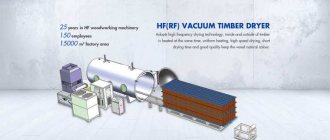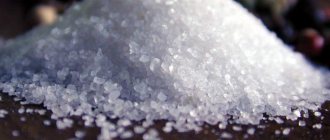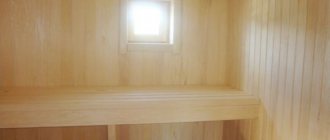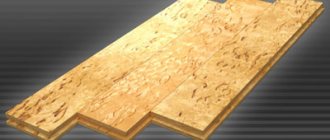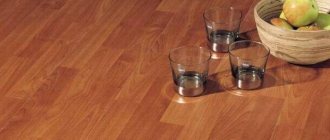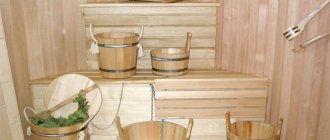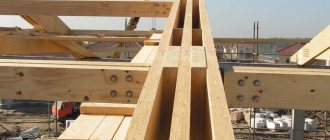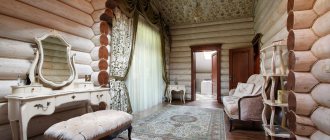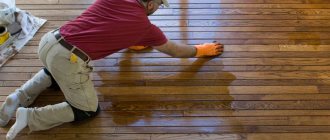Wood in the form of finished lumber, plywood products and particle boards continues to be the basic consumable raw material for many areas of industry and construction. Its environmental friendliness and flexibility in processing allow it to compete even with high-tech fiberglass. At the same time, there are also disadvantages of the material due to low strength and sensitivity to aggressive environments. Special pre-treatment methods allow them to be minimized. In particular, chamber drying of wood with heat is one of the most common ways to increase its technical and physical properties.
Equipment used
There are different types of drying units, the general fundamental design of which provides for the presence of coolants. From them, hot flows are distributed over the surface of the target material. The basic classification distinguishes between dielectric and convective drying chambers. Dielectric models generate thermal energy in the process of converting high-frequency currents.
In turn, convective units force heat flows to the lumber through preheated air, which helps remove moisture. The drying agent in this operating scheme is heated together with water vapor. After which the mixture circulates in the heat exchanger. A convective chamber for drying wood can use fire tube, steam-water, and induction media as functional elements (heat conductors). Sometimes gas chambers are used, which release large volumes of thermal energy. Both dielectric and convective dryer models can operate in a vacuum, that is, at low pressure.
Types of cameras
Today there are many different drying chambers. According to the type of air circulation, chambers are:
- with natural circulation. In such chambers, steam moves through the stack due to the difference in the specific gravity of more and less heated air particles
- with forced circulation. These chambers have fans that help the air move.
Warm air, driven by a fan or circulating naturally, gives off heat to wet raw materials and at the same time draws moisture from the materials being dried, which comes out in the form of steam. Drying lumber in drying chambers is a very capricious process. If the air in the chamber is very dry or the relative humidity is low, drying will occur too quickly, resulting in damage to the wood, for example, cracks. Using spray devices, craftsmen establish the required relative humidity of the air inside the chamber.
The air only accepts a specific volume of steam, it all depends on the temperature. The temperature does not change during the drying process. In order for the drying process to proceed correctly, a constant supply of fresh air is needed, that is, dry air that enters the chamber through the supply valve. Meanwhile, the air that has accepted a sufficient amount of water vapor, that is, moist air, is discharged outside the chamber through the exhaust valve.
By type of operating mode there are:
- periodic cameras. Raw materials are loaded in the same place where dried materials are unloaded
- continuous cameras. In such chambers, raw materials are loaded at one end of the chamber (wet), and dry materials are unloaded at the other end (dry). The temperature and humidity levels of the drying agent in the chamber change from the wet end to the dry end, that is, the temperature rises and the relative humidity level falls.
Preparation of material
The quality of drying largely depends on how correctly the stacks were prepared - the so-called packages of lumber, which are specially formed to be placed in the chamber. For example, uneven drying and deformation of individual areas on the boards will be the result of improper packaging.
There are usually two methods of this kind of preparation:
- single stack;
- batch formation of bookmarks.
In the first case, one stack includes several boards folded in the same configuration. Batch stacking assumes that the lumber will be stacked in several ready-made stacks. A rigid platform with a flat surface is used as the basis for the stack. It can be a rail trolley formed by separate tracks.
In order for chamber drying of wood to be carried out without leakage of the thermal agent, underloading of the stack is not allowed. It must be completely filled either with boards of the same length, or with lumber of different sizes staggered. One or more layers of lining are provided between the boards being joined.
For what purposes is it suitable?
For the construction of a wooden house, chamber-drying timber is considered preferable, since it practically does not create shrinkage and is less susceptible to warping than untreated timber.
These characteristics save time, since it is possible to begin finishing the premises immediately after installation.
Territory of use of chamber timber in house construction:
- house building frame;
- external walls with load-bearing characteristics;
- columns and other supporting elements;
- roofing system;
- interfloor covering;
- interfloor stairs.
Additionally . Chamber timber is often used as interior and exterior home decor. It is used in finishing, so it must be grade 1. In order to preserve the presentation of the product, it is transported in a protective film and closed trucks or other transport cargo equipment.
Modes
There are three categories of drying:
- The first category is a high-quality mode, carried out at a temperature of about +60+70°C. This mode allows you to dry the material to a humidity coefficient of 6-8%. The products obtained by this processing method are distinguished by high technical and operational indicators, allowing the material to be used in instrument and mechanical engineering, in power building structures, in the production of engineering equipment elements, etc.
- The second category provides a regime that brings the humidity level to 8-10%. For such purposes, drying chambers operating at temperatures up to +75°C are used. The target area for using materials processed in this mode is furniture production, as well as the production of joinery and building structures.
- The third category of drying allows you to obtain lumber of average quality, the humidity of which can reach 15%. Such wood is subsequently used to produce containers, moldings and inexpensive building materials.
You need to know the nuances
Recently, a trend has developed in the forestry industry that investors are investing in production that brings profit in the short term. Because of this, recently they have been trying to build drying chambers in the form of easily and quickly erected insulated metal structures. But here too the question of choice arises. When considering various types of construction (convective, condensation, aerodynamic, vacuum), as a rule, they focus on cost.
Some manufacturers of drying chambers, in an effort to sell their product, do not particularly educate the client, praising their chamber.
Entrepreneurs often order a chamber with a large loading capacity (60-100 m3), mistakenly believing that they will be able to load all the material into it at the same time, including different thicknesses, and in the future it turns out that, having a large chamber, they underload it and violate the technological process.
Warming up the wood
Primary heating is required to prevent stress on the internal structure of the lumber during the main drying. An intense but short-term thermal effect is produced, during which the moisture does not evaporate. In parallel with the heat treatment, saturated steam is sent into the chamber. This function is performed by a group of fans with heaters. The process of evaporation of moisture throughout the entire thickness of the material will begin only after the cessation of thermal exposure.
Again, so that chamber drying of wood does not damage its structure, already at the first stage of heating, the balance between the temperature regime and the rate of humidity drop is regulated. If this balance is disturbed, there is a risk of cracks. The duration of this procedure is determined by the external conditions and characteristics of the wood - on average from 1 to 2 hours.
Vector for deep processing
The fact that today wood processors are trying in one way or another to organize drying production at their enterprises indicates a desire to engage in deep wood processing, which brings great profit.
An increase in duties on the removal of round timber will lead to an even greater increase in the volume of deep wood processing in Russia. The development of the industry will inevitably affect a significant increase in drying capacity. The prospect for the development of wood drying in Russia as one of the fundamental stages in the production of high-quality wood products, which are used in many industries.
Main stage
After the initial warm-up, drying immediately follows. But the transition must be gradual, which is reflected in the slow opening of the air exchange dampers that remove moisture. At the same interval, the optimal parameters of heat flows are established. The temperature regime, in turn, is regulated by the opening level of the chamber blinds. If it is necessary to increase the saturation of the agent, the inlet pipes are completely closed.
Also, the degree of saturation of the thermal effect can be adjusted by starting the steam generator. However, steam injection systems cannot be connected when the hood is open. During the operation, chamber drying of wood is controlled by temperature characteristics and its error. In production, information about these values is usually entered into a log every hour.
Are imported ones better?
I cannot agree with the opinion that the prospect for the development of wood drying in Russia lies only in the acquisition of imported drying chambers. The existing stereotype that imported dryers, although much more expensive in cost, allow drying to be of higher quality than domestic ones, is far-fetched and does not have strong and unambiguous evidence. Often, in confirmation of this, not the best example is given with the domestic and foreign automobile industry. Then the question arises: is it even possible to dry qualitatively not in imported dryers? In my opinion, it is possible to dry, if not better, then at exactly the same quality level, in domestic drying chambers.
The main advantages of imported drying chambers are their housing, consisting of aluminum panels, as well as automatic control systems that ensure high-quality drying.
However, the body of the drying chamber made of aluminum can be manufactured with high quality by most domestic enterprises. In addition, Russian manufacturers also complete their designs with imported components (fans, heat exchangers, control systems, etc.). I am confident that domestic companies are quite capable of developing and manufacturing new competitive designs of drying chambers.
In practice, when using imported chambers, problems arise, most often associated with the operation of the automatic drying process system. In most cases, lumber is dried according to factory programs installed in the control unit, and therefore completely rely on automation. Even with a minor malfunction in its operation, personnel are lost, and not everyone knows how to adequately control the camera in manual mode.
Moisture and heat treatment
This is also a kind of intermediate stage, for which special environmental conditions are created: it must provide a high intensity of moisture removal and a stable temperature regime. Such an environment is created through the same steam injection with the heaters turned on. Fans and exhaust ducts can be used in regulation. The optimal temperature for this processing mode should be 6-7°C higher than the environment at the main drying stage, but at the same time be below +100°C.
It is important to emphasize that moisture-thermal treatment is not applied to all wood species. For example, technologies for the production of dry timber provide for the use of this operation for lumber from cedar, pine, linden, the thickness of which exceeds 60 mm. Thick workpieces can be subjected to moisture-heat treatment several times to completely cover the internal structure.
Microwave drying
Such devices were invented quite recently. They look like a closed metal container. The work is carried out under the influence of the reflective surface of microwave waves. The operating principle is similar to that of a conventional microwave. Using a microwave chamber, raw materials of any cross-section and dimensions are dried. Microwave cameras have a simple design; settings allow you to select any wavelength.
Therefore, a wide variety of timber products can be dried. The mode of attenuation of microwave waves guarantees regulation of the temperature inside the chamber. Using reversible fans, excess moisture is removed from the system. Microwave drying is compared with dielectric drying, which is considered the most effective, but is not used in Russia due to high energy costs.
The main disadvantage is the high energy consumption, like that of aerodynamic dryers.
Ending the process
After drying, conditioning treatment is carried out, the purpose of which is to equalize the moisture content and structure of the material. By means of humidifying devices and heaters, a special environment is formed in which overdried areas of lumber are moistened, and insufficiently dried areas dry out. In terms of time, such processing lasts several hours - the specific duration depends on the volume of the bookmark and the parameters of the material.
The moisture content of wood after chamber drying with conditioning treatment also varies from 6 to 15% depending on the mode used. Next, after pre-cooling, the stacks are unloaded from the chamber. If necessary, an additional forced cooling operation with ventilation can be used.
Vacuum drying
The vacuum drying chamber for wood is designed for valuable types of timber, such as teak, wenge, rosewood and others. This unit operates from convection heating of wood and vacuum removal of excess moisture. The process takes place at a maximum temperature of +65. However, due to a vacuum pressure of 0.09 MPa, boiling occurs at 45.5. Such conditions make it possible to dry the wood without the aggressive effects of high temperature. Thus, high internal stress does not arise and the wood is not subject to cracking.
During drying, when the temperature rises to 65 degrees, the automation turns on and the electric boiler turns off. The upper layers of timber slowly cool, and moisture from within flows to drier areas. During one drying period, about 250 such cycles occur. Under such conditions, moisture is evenly drawn out along the length and depth of the material. After drying, the material is characterized by a moisture level within 4-6%.
Pros of technology
Chambers with temperature and humidity treatment allow drying processes to be carried out while fully preserving the environmental friendliness of the material. In most cases, such processing methods do not require the use of active chemicals that increase the efficiency of the process. The high quality of the result is also noted. If the operator did not make mistakes when organizing the process, the resulting timber will acquire high strength and protective qualities.
Many people also point to the high productivity of chamber drying of wood. The pros and cons, however, agree on this characteristic. On the one hand, batch processing does allow large volumes of wood to be serviced in short time intervals. On the other hand, the inability to process small packages with a reduced load limits the scope of application of such equipment.
Different approach
What is important, in my opinion, is the correct choice of drying chamber design, taking into account the performance and quality of drying, and not cost, which is the main criterion today. For example, for a large sawmill producing tens of thousands of cubic meters of materials per year, it is necessary to select chambers with high productivity (drying tunnels, condensation dryers, etc.).
For those entrepreneurs who work with difficult-to-dry hardwood (including exotic) wood, and usually process small volumes, you should pay attention to vacuum dryers, microwave-heated chambers, ultrasonic and the like. With these special methods, it is possible to dry valuable types of wood in blanks efficiently and quickly.
When choosing a specific chamber design, you need to clearly understand what you want to dry and for what purpose.
Disadvantages of technology
The main criticism of this drying technology comes down to the risk of the formation of numerous defects in lumber during the operation. One of the most common of these is warping. Violation of technology can provoke both longitudinal and transverse deformations.
Typically, such processes are the result of insufficient moisture removal before the main drying stage. Often the material develops defects in the form of cracking at the ends. Similar defects arise if the lumber dryer operated in the configured mode during the initial warm-up stage. The technology requires that this process, even at minimum temperatures, be carried out under conditions of softening the structure of the lumber.
"A C"
The current state of drying equipment at Russian enterprises can only be described as satisfactory. Sawmills and woodworking industries that have been operating for a long time use a large number of drying chambers of old designs that require significant modernization. And in some cases, cameras are only listed on the balance sheet, but do not work.
In order to properly dry lumber in such conditions, production workers spend enormous amounts of energy and labor. It turns out to be a kind of vicious circle. It is not possible to invest in the re-equipment of drying equipment due to the lack of necessary financial resources. As a result, the company does not have enough resources for effective growth.
Average prices
The cost of the material depends on the sales region : in Moscow, it is 15-30% higher than in the central regions, on the cross-sectional size of the timber and its length, on the chamber drying technology and on sales volume: retail up to 5 m3, small wholesale from 5 to 10 m3 and large wholesale, the cheapest.
| № | Chamber timber dimensions | Quantity, pcs. in 1 m3 | Price Retail/ small wholesale/ large wholesale rub. for 1 m3 |
| 1 | 0.15x0.1x6 | 11 | 10300/ 10250/ 10200 |
| 2 | 0.2x0.1x6 | 8 | 10400/ 10350/ 10300 |
| 3 | 0.15x0.15x6 | 7 | 10430/ 10280/ 10230 |
| 4 | 0.15x0.2x6 | 5 | 10470/ 10290/ 10220 |
| 5 | 0.2x0.2x6 | 4 | 10500/ 10350/ 10300 |
Prices for 1 m2 of chamber-drying timber in Russian cities:
| № | Chamber timber dimensions | Quantity, pcs. in 1 m2 | Price Retail/ small wholesale/ large wholesale rub. for 1 m2 |
| 1 | 0.15x0.1x6 | 1,6 | 1500/ 1490/ 1480 |
| 2 | 0.2x0.1x6 | 1,6 | 2080/ 2070/ 2060 |
| 3 | 0.15x0.15x6 | 0,9 | 1340/ 1320/ 1310 |
| 4 | 0.15x0.2x6 | 0,83 | 1720/ 1710/ 1700 |
| 5 | 0.2x0.2x6 | 0,83 | 2180/ 2160/ 2140 |
